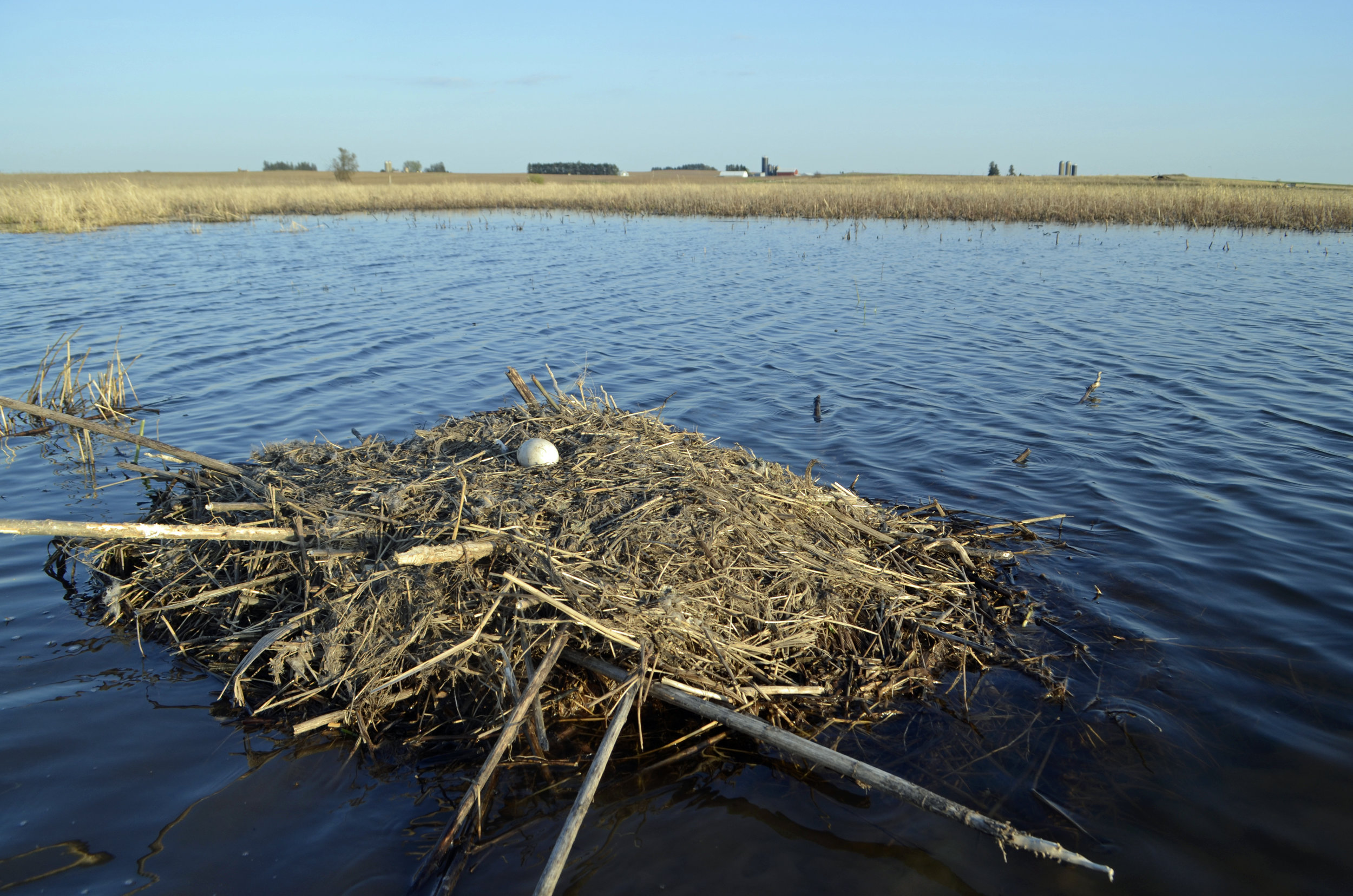We were very excited in May when it appeared that a pair of black-necked stilts might nest at Goose Pond... and were very disappointed when they left us.
Black-necked stilts with their black neck and long, skinny legs are is easy to identify by looking at field marks of shorebird photos in bird identification books.
Black-necked stilt ready for its glamour shot. Photo by Arlene Koziol
Sam Robbins in 1991 wrote in Wisconsin Birdlife that their status was accidental with only four records. The first record was in 1847 when a flock was seen at Racine and one was collected. The second record account in 1951 was of an individual at Horicon Marsh. This bird was also collected for a museum collection. The next record in 1986 was also from Horicon Marsh, and in 1987 a stilt was sighted at Schoeneberg Marsh/Erstad Prairie. Luckily for the stilts, by the 1980s photographs were used instead of shotguns to verify rare sightings.
Black-necked stilts are a southern species that is usually found from the gulf coast to the southwest states. On their wintering areas, stilts are frequently found with avocets, another large and colorful shorebird. Researchers reported a stable to increasing stilt population between 1966 and 2014. In the past 25 years, stilts have expanded their breeding range north.
Black-necked stilt parent and chicks. Photo by Richard Armstrong
In 1999, Jack Bartholmai, an expert observer and photographer, recorded the first black-necked stilt nesting at Horicon Marsh. Their population has slowly expanded at Horicon Marsh and this spring 30 individuals could be found. In 2004 a pair nested at a wetland restoration in Jefferson County, and last year a pair raised young at the Mud Lake State Wildlife Area near Reeseville in Dodge County.
Black-necked stilts copulating. Photo by Richard Armstrong
Jim Shurts and Mark found our pair of stilts on May 13 on the east pond (the wetland attached to Goose Pond, but privately owned on the east side of Goose Pond Road) while our team conducted our Great Wisconsin Birdathon. For the next 10 days, we frequently saw stilts, and most sightings were from the flooded food plot north of the west pond and south of Kampen Road. Richard Armstrong photographed them copulating on May 17 and Mark saw them copulating two days later. Mark also saw a stilt aggressively chasing a late-migrating yellowlegs from the area where they spent a lot of time, and where we thought they would nest. Stilts nest near water and we were considering fencing off the nesting area to protect they nest from ground predators.
Graham Steinhauer, our Goose Pond Sanctuary land steward, saw the stilts for the last time on May 23. Sam Robbins would have never guessed in 1990 that stilts would nest in Wisconsin. Next year we hope they return -- and nest this time -- and then they can then be recorded as a “confirmed nesting” instead of “probable nesting” in the Goose Pond block of the Breeding Bird Atlas II.
Written by Mark Martin and Sue Foote-Martin, Goose Pond Sanctuary resident managers
Cover photo by Arlene Koziol





















